UP NEXT


Genetic factors are considered to play a key role in all major forms of glaucoma and anyone who is a blood relative of someone with this disease is at an increased risk. This can be a surprising fact and scary feeling for some families that know of a family member that has been managing glaucoma.


Those with a family history of glaucoma are 4 to 9 times more likely to develop it.1
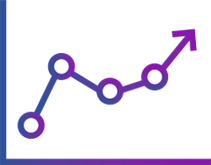
Glaucoma is about 3 to 4 times more common in African American populations than in people of European ancestry.2

The National Eye Institute encourages people with a high risk for glaucoma to have a comprehensive dilated eye exam at least once every two years.3
If you have a family history of glaucoma, talk to your eye doctor about screening and other steps you can take to take early control.
Glaucoma is a disease that damages the eye's optic nerve. It typically occurs when fluid builds up in the front part of the eye. The extra fluid increases the pressure in the eye (called intraocular pressure or IOP), damaging the optic nerve.4,5
*Glaucoma can be open-angle or closed-angle; 90% of cases can be attributed to open-angle glaucoma4

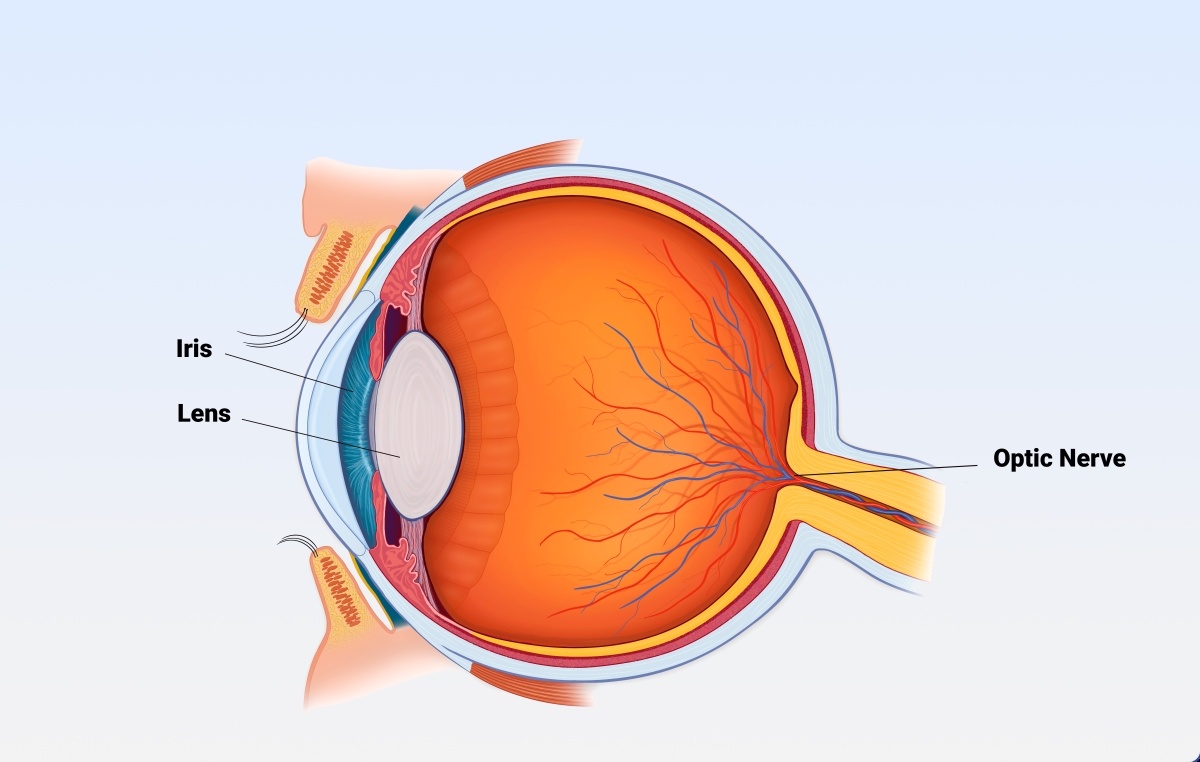
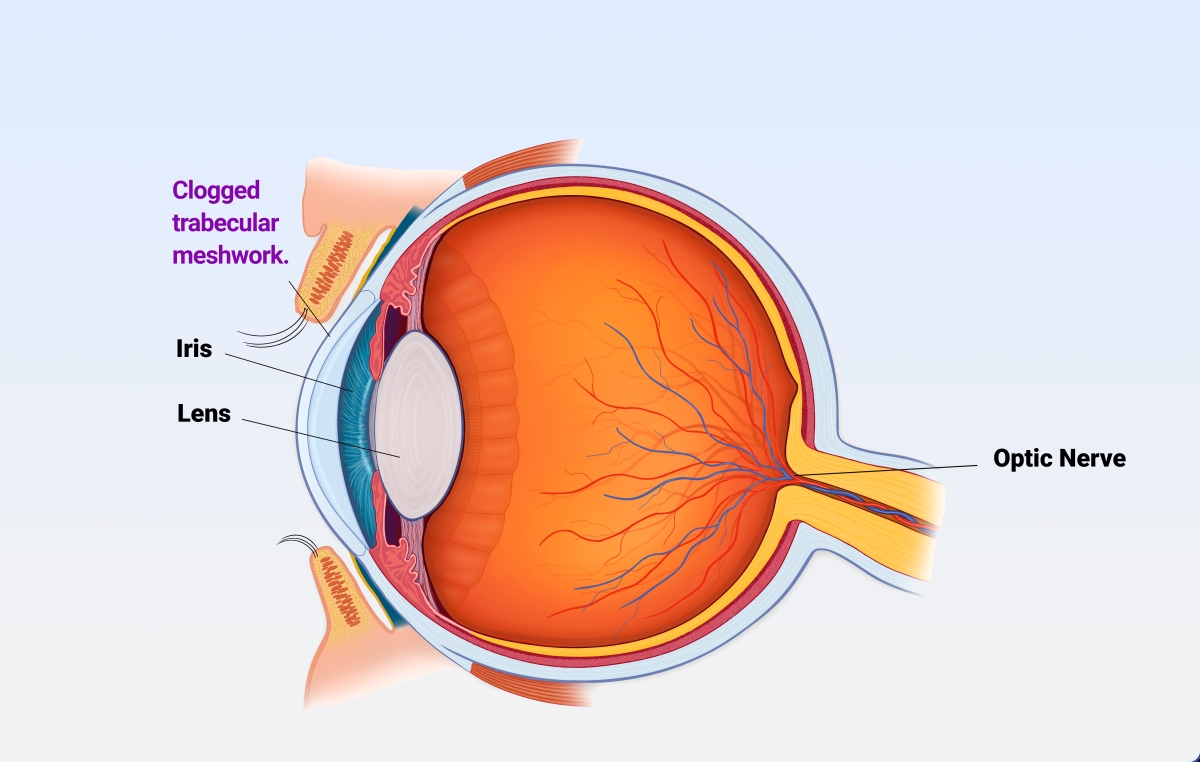

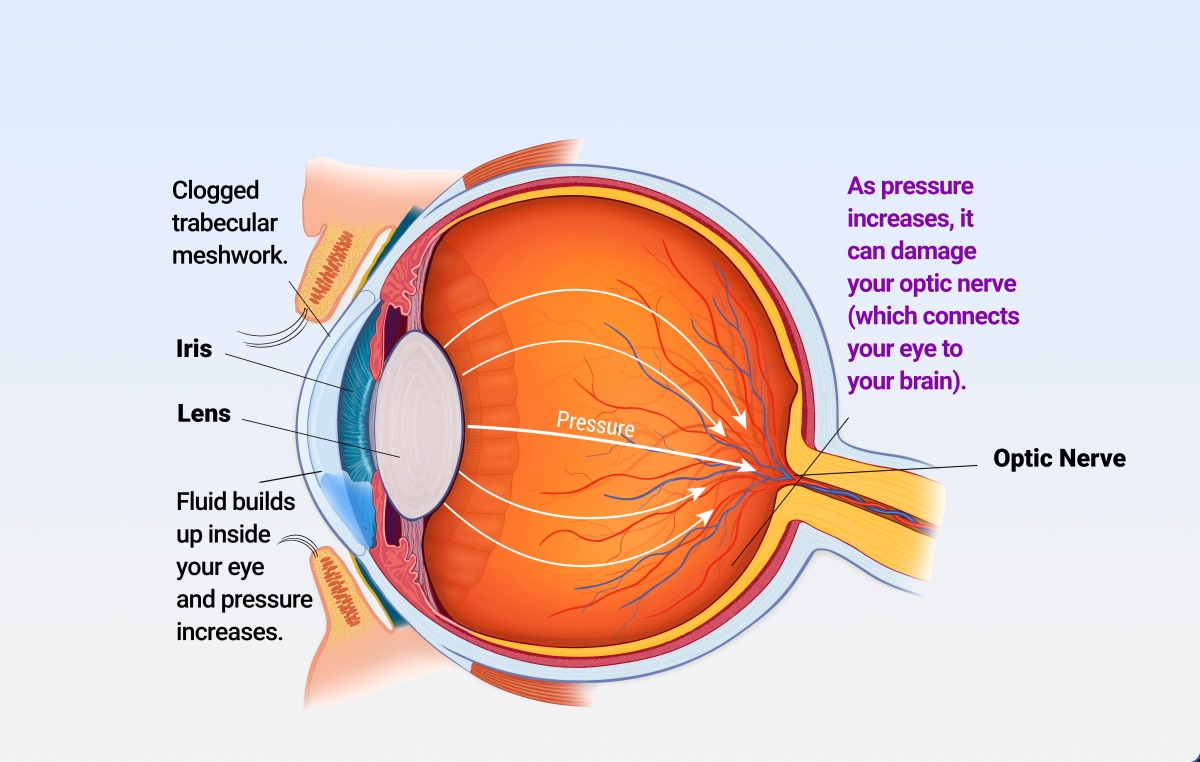
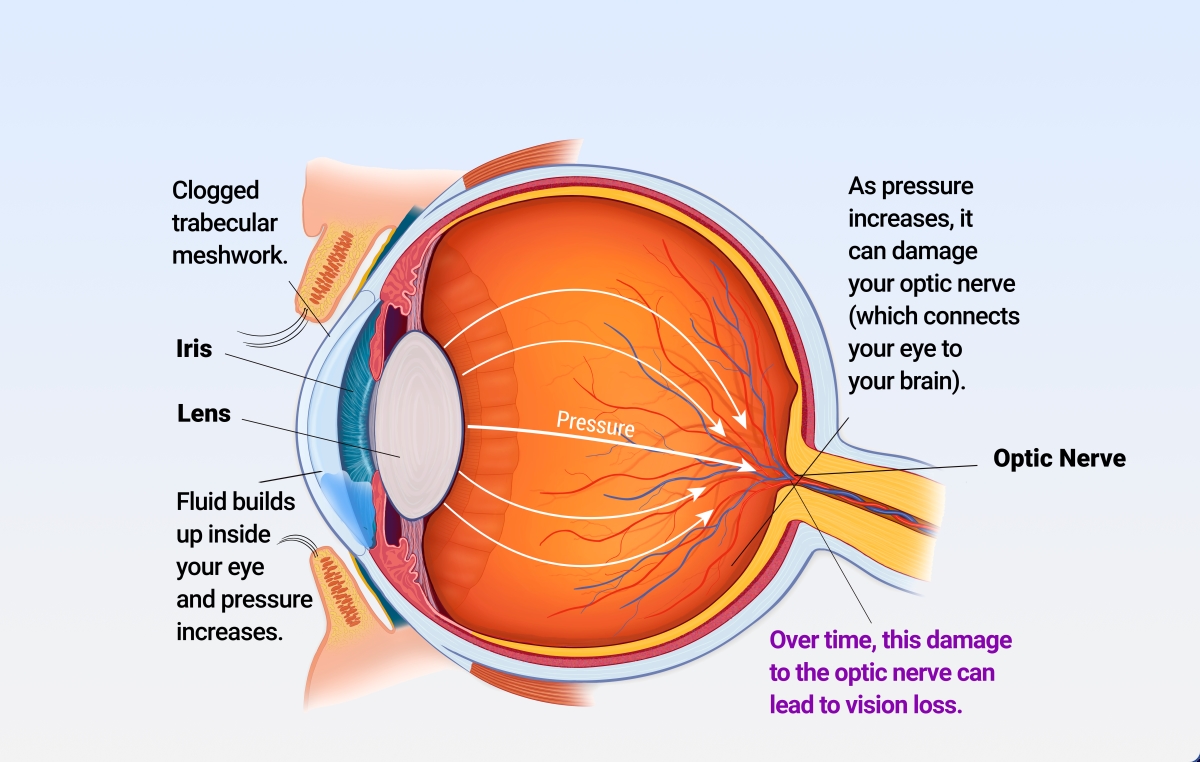
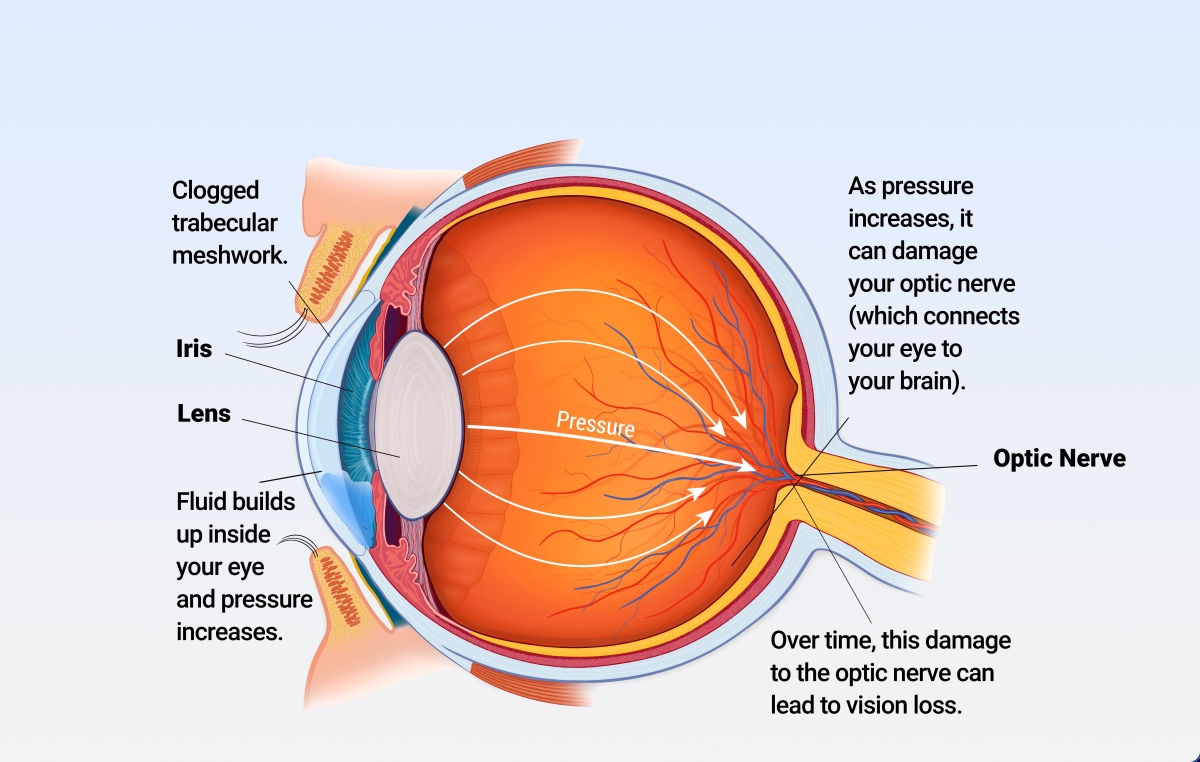
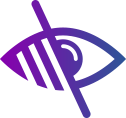


My Glaucoma is dedicated to empowering people living with glaucoma to take control of their condition. Education is the first step in taking control.
Take the My Glaucoma Quiz to test your glaucoma knowledge and to find out more about this disease.
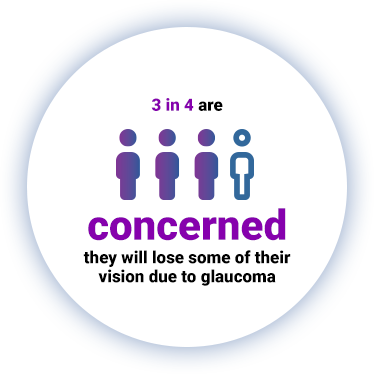
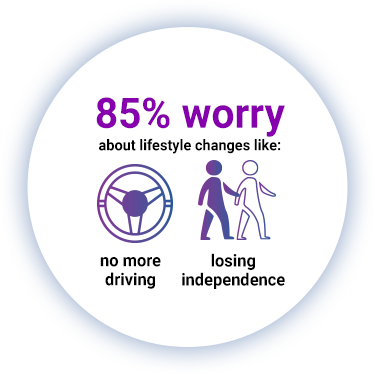

Want to learn more about who we surveyed and what we asked?
Click here for additional information
on risk factors, symptoms and treatment.
In glaucoma, vision loss due to elevated IOP in the eye is irreversible and often worsens over time. Uncontrolled, increased and changing IOP causes damage to the optic nerve and loss of vision.4,9,10
Before blindness sets in, vision loss can affect people with glaucoma in multiple ways because the brain adapts to vision loss and compensates for some loss of vision.9,10
Thus, it's not surprising that based on a study of 40 patients with glaucoma:
People with glaucoma have a
People with glaucoma are at a
Vision impairment may be associated with decreased ability to perform activities of daily living.10
Before blindness sets in, vision loss can affect people with glaucoma in multiple ways because the brain adapts to vision loss and compensates for some loss of vision.9,10
Vision impairment may be associated with decreased ability to perform activities of daily living.11,12
Thus, it's not surprising that based on
a study of 40 patients with glaucoma:
People with glaucoma have a
People with glaucoma are at a
References: 1. Are You at Risk For Glaucoma?. Glaucoma Research Foundation. https://www.glaucoma.org/glaucoma/are-you-at-risk-for-glaucoma.php. Published 2019. Accessed June 16, 2021. 2. How Glaucoma Affects Different Ethnic Groups. BrightFocus org. https://www.brightfocus.org/glaucoma/article/how-glaucoma-affects-different-ethnic-groups. Accessed April 16, 2021. 3. Glaucoma: What Is Your Genetic Risk. BrightFocus org. https://www.brightfocus.org/glaucoma/article/glaucoma-what-your-genetic-risk. Accessed April 12, 2021. 4. Boyd K. What is Glaucoma? American Academy of Ophthalmology: Protecting Sight. Empowering Lives - American Academy of Ophthalmology. https://www.aao.org/eye-health/diseases/what-is-glaucoma. Published August 28, 2019. Accessed September 13, 2019. 5. What is Glaucoma? Glaucoma org. https://www.glaucoma.org/glaucoma. Accessed September 13, 2019. 6. Peters D, et al. Lifetime risk of blindness in open-angle glaucoma. ajo.com. https://www.ajo.com/article/S0002-9394(13)00364-4/fulltext. Accessed on September 13, 2019. 7. Quigley HA. Number Of People With Glaucoma Worldwide. Glaucoma.org. https://www.glaucoma.org/glaucoma/facts-statistics/glaucoma-facts-and-stats.php. Accessed September 13, 2019. 8. World Health Organization. Glaucoma Is Second Leading Cause Of Blindness Globally. WHO.int. https://www.who.int/bulletin/volumes/82/11/feature1104/en/. Accessed September 13, 2019. 9. Nouri‐Mahdavi K, Hoffman D, Coleman AL, et al. Advanced glaucoma intervention study. Predictive factors for glaucomatous visual field progression in the advanced glaucoma intervention study. Ophthalmology. 2004;111(9):1627‐1635. 10. Asrani S, Zeimer R, Wilensky J, Gieser D, Vitale S, Lindenmuth K. Large diurnal fluctuations in intraocular pressure are an independent risk factor in patients with glaucoma. J Glaucoma. 2000;9(2):134‐142. 11. Hoste, AM. New insights into the subjective perception of visual field effects. Bull Soc Belge Opthalmol. 2003;(287):65-71. 12. Varma, R, Lee, PP, Goldberg, I, Kotak, S. An Assessment of the health and economic burdens of glaucoma. Am J Ophthalmol. 2011;152(4):515-522. 13. De Luna R, Mihailovic A, Nguyen A, Friedman D, Gitlin L, Ramulu P. The association of glaucomatous visual field loss and balance. Transl Vis Sci Technol. 2017;6(3):8. 14. Haymes SA, Leblanc RP, Nicolela MT, Chiasson LA, Chauhan BC. Risk of falls and motor vehicle collisions in glaucoma. Invest Ophthalmol Vis Sci. 2007;48(3):1149‐1155. 15. National Academies of Sciences Engineering Medicine. Making Eye Health A Population Health Imperative. The National Academies Press. https://www.nap.edu/catalog/23471/making-eye-health-a-population-health-imperative-vision-for-tomorrow. Accessed September 13, 2019.
which was intended to provide a general overview of glaucoma and the role of intraocular pressure (IOP) and was not intended to make any statements or claims about any specific product.
This link will now take you to a site where you will learn about a specific treatment option.